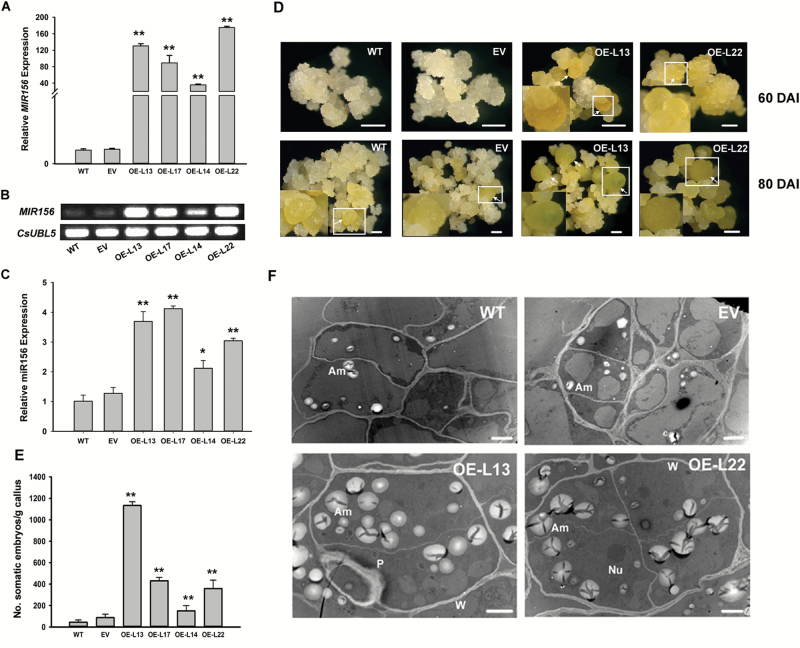Fig. 1.
Overexpression of csi-miR156a enhances somatic embryogenesis (SE) capability in citrus Fortunella hindsii. (A, B) Relative expression of MIR156a (csi-miR156a precursor) in wild-type (WT), empty vector (EV), and overexpressed (OE) callus lines without SE induction, detected by qRT-PCR (A) and semi-qRT-PCR (B). CsUBL5 was used as the endogenous control. (C) Relative expression of mature csi-miR156a in WT, EV, and OE lines detected by qRT-PCR. U6 was used as the internal control. (D) SE of WT, EV, and OE lines at 60 d and 80 d after induction (DAI). Calluses were induced on glycerol-containing medium, and sub-cultured at 20-d intervals. Somatic embryos formed at 60 DAI in the OE lines, whereas they did not form until 80 DAI in the WT and EV. Arrows indicate somatic embryos, and boxed regions are enlarged in the bottom corner of the figures to show the somatic embryos in close-up. Scale bars =1 mm. (E) Evaluation of SE capability in the WT, EV, and OE lines at 80 DAI. SE capability was measured as the number of somatic embryos formed per gram of fresh callus. Error bars represent standard deviation of three biological replicates. Statistically significant differences compared with the WT were determined by t-tests: *P<0.05; **P<0.01. (F) Cellular ultrastructure of the WT, EV, and OE lines. Am, amyloplast; Nu, nucleus; P, plastid; W, cell wall. Scale bars = 2 µm.

